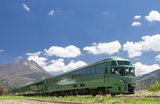Skiing has become an increasingly popular winter activity, offering both thrills and breathtaking scenery as you glide through snowy landscapes. However, many people are hesitant to take the plunge, unsure of where to start. If you're one of those curious but cautious about skiing, we've got you covered! Here’s a guide to the 7 essential things every beginner skier should know. With these basics in mind, skiing will no longer feel like an intimidating or unreachable goal. Let’s dive in!
1. What is Skiing?
Skiing involves gliding over snow using skis attached to your feet. It’s similar to other board sports like skateboarding, ice skating, and wakeboarding, but in this case, the surface is snow. The most common forms of skiing are Skiing (two skis) and Snowboarding (one board). Each uses different equipment, techniques, and offers unique experiences.
- Skiing: You use two separate skis, with one on each foot, and poles to help with balance and turns. This is typically easier for beginners, as it provides more control over speed and stability.
- Snowboarding: Here, you use one board, with both feet strapped onto it. This sport relies more on body movement and balance to steer. While it can be more challenging to learn initially, many find it more thrilling once they get the hang of it.
No matter which style you choose, skiing and snowboarding both offer excitement and the opportunity to enjoy the great outdoors.
2. Is Skiing Dangerous?
Skiing is a fun and exhilarating sport, but it does come with certain risks. For beginners, falls and crashes are common as you learn to control speed and direction. In more serious cases, skiing can result in injuries like bruises, sprains, and even fractures, especially if you're not careful on steeper slopes or during high-speed turns. Additionally, cold weather can pose risks like frostbite and hypothermia.
Fortunately, with the right precautions and equipment, these risks can be minimized. Skiers wear protective gear like helmets, goggles, wrist guards, knee pads, and insulated clothing to stay safe. It's also essential for beginners to stick to easy slopes and take lessons to learn the basics of stopping, turning, and falling safely. Be sure to check the weather and snow conditions before hitting the slopes to ensure a safe and enjoyable experience.
3. Where Can I Go Skiing?
Skiing is a global sport with popular destinations in countries like Japan, Korea, China, Europe, Canada, the United States, and even parts of the Southern Hemisphere like New Zealand and Chile. For beginners, Japan is a top choice due to its high-quality powder snow, extensive ski resort options, and well-maintained beginner-friendly slopes.
In Japan, the ski season typically runs from December to April, depending on the location. Popular regions for skiing include Hokkaido, Nagano, and Niigata, all known for their scenic mountain resorts. If you're planning a trip, you can either drive to the ski resorts or use public transportation options like trains, buses, or shuttle services. For convenience, you can also book ski packages that include transportation and rental equipment, making it easier for first-timers.
4. What Gear Do I Need for Skiing?
There’s quite a bit of equipment required for skiing. Essential items include skis, ski boots, poles (for skiing), helmets, goggles, gloves, and snow clothing such as jackets and pants. Additionally, you’ll need to dress warmly with layers, including thermal wear, a beanie, a neck gaiter, and ski socks.
Most ski resorts offer equipment rentals, including skis, boots, and helmets, which is ideal for beginners. However, items like goggles and gloves are often not available for rent, so it’s better to bring your own. If you're prone to falling, consider getting extra protection like wrist guards, knee pads, and hip protectors for added safety.
5. Is Skiing Expensive?
The cost of skiing depends on factors like location, season, and personal needs. The typical expenses include:
- Lift tickets (ski passes)
- Equipment rental (skis, boots, poles)
- Clothing rental (jackets, pants, helmets)
- Ski lessons (if needed)
- Travel to the ski resort (flights, trains, buses)
- Accommodation and meals
A one-day ski pass usually costs between $50 and $100, depending on the resort. Rentals for ski equipment and clothing are around the same price range. If you opt for lessons, group classes are more affordable, while private lessons can cost a few hundred dollars. Additionally, ski resorts near major cities tend to be more expensive, while more remote resorts may offer better deals. Planning ahead and booking early can help you save on costs.
6. Should I Get a Ski Instructor?
Yes, if you're a beginner, taking lessons with a professional instructor is highly recommended. Most ski resorts have ski schools or training centers that offer group or private lessons for beginners. Ski instructors can help you learn essential techniques such as balance, turning, and braking. They also teach you how to fall safely, reducing your risk of injury.
You can book ski lessons at the resort or even through travel platforms like Klook, where you can find lessons in various languages, including English or Chinese. Whether you choose group lessons or one-on-one private instruction, learning from an expert will make your skiing experience safer and more enjoyable.
7. Should I Join a Tour or Go Skiing Independently?
This depends on your preferences and comfort level. Group ski tours can be a convenient option, especially for beginners. Tours usually take care of all the details, including transportation, accommodation, ski passes, and even lessons. They are ideal if you want a hassle-free experience, and they often come with a fixed price, so you don’t need to worry about hidden costs.
However, joining a group tour may limit your flexibility since you'll need to stick to the schedule. Skiing independently offers more freedom—you can plan your days, choose your slopes, and move at your own pace. This option requires more planning but allows you to customize your trip to your preferences. If you’re new to skiing, a tour might be the better option for a stress-free introduction, while more experienced travelers might prefer to go solo.





























